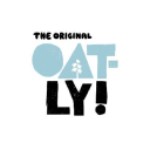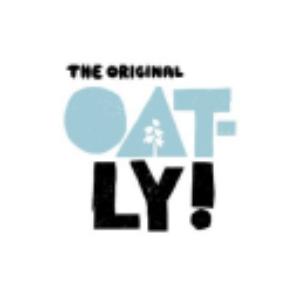Welcome to our dedicated page for Oatly Group Ab news (Ticker: OTLY), a resource for investors and traders seeking the latest updates and insights on Oatly Group Ab stock.
Oatly Group AB (OTLY) delivers innovative oat-based food and beverages through proprietary enzyme technology developed from Lund University research. This news hub provides investors and industry observers with essential updates about the company's strategic initiatives and market position.
Access official press releases covering financial results, product innovations, sustainability milestones, and partnership announcements. Our curated collection serves as a reliable resource for tracking Oatly's progress in reshaping the plant-based food sector across three continents.
Key updates include quarterly earnings disclosures, manufacturing expansions, new market entries, and environmental impact reports. All content maintains factual accuracy while avoiding speculative analysis to support informed decision-making.
Bookmark this page for streamlined access to Oatly's latest developments in sustainable food technology. Check regularly for updates on operational achievements and industry leadership in the non-dairy sector.
Oatly (Nasdaq: OTLY) reported third quarter 2025 results for the period ended September 30, 2025.
Key highlights: Revenue $222.8M (+7.1% year-over-year; +3.8% constant currency), gross margin 29.8% (flat YoY), Adjusted EBITDA $3.1M (improved vs. loss prior year), and net loss attributable to shareholders $65.3M (widened, driven by fair value losses on Convertible Notes). Sold volume was 150.6M liters (+6.6%). The company reaffirmed 2025 guidance: constant currency revenue roughly flat to +1%, Adjusted EBITDA $5M–$15M, and capex ~ $20M. A strategic review of Greater China is ongoing and a refinancing was completed on Oct 3, 2025.
Oatly (Nasdaq: OTLY) released its first Future of Taste Report on Oct 16, 2025, combining interviews with baristas across 23 countries and CultureLab quantitative data to identify five beverage trends for 2026 and beyond.
Key highlights: decaf interest rose 90x google impressions (2024–2025), fiber-related searches jumped 9,500% June–July 2025, a surge in East and Southeast Asian flavors (ube, pandan, hojicha), growth in fermented drinks, and a rise in destination/locally sourced signature beverages. Oatly published an Autumn/Winter Lookbook and invites readers to view the full report and imagery online.
Oatly Group AB (NASDAQ:OTLY) has announced significant financial restructuring initiatives including the issuance of SEK 1,700 million Nordic Bonds and entry into a SEK 750 million sustainability-linked super senior revolving credit facility. The company plans to use the proceeds to prepay its existing $130 million term loan B facility and repurchase certain 9.25% Convertible Senior PIK Notes due 2028.
According to CFO Marie-José David, these transactions strengthen Oatly's financial foundation by reducing total outstanding debt, lowering debt-related costs, improving capital structure terms, and reducing convertible notes dilution impact. The transactions are expected to close around October 3, 2025, subject to customary conditions.
Oatly Group (Nasdaq: OTLY), the world's leading oat drink company, has scheduled its Q3 2025 financial results announcement for October 29, 2025, before U.S. market opening.
The company will host a conference call and webcast at 8:00 a.m. ET on the same day to discuss the quarterly performance. Investors can access the event through Oatly's investor relations website, where the webcast recording will remain available for 30 days.
Oatly Group AB (Nasdaq: OTLY) has announced the issuance of SEK 1,700 million senior secured floating rate bonds under a SEK 2,700 million framework. The Nordic Bonds will be issued at 100% nominal value with a 3-month STIBOR plus 7.00% interest rate and a 4-year tenor, with expected issuance on September 30, 2025.
The proceeds will be used to prepay the company's existing $130 million term loan B credit facility and to repurchase and cancel certain 9.25% Convertible Senior PIK Notes due 2028. This strategic refinancing aims to optimize Oatly's capital structure costs and terms without raising additional financing.
Oatly Group AB (NASDAQ:OTLY) announced three major financial initiatives to optimize its capital structure. The company plans to issue SEK 1,700 million Nordic Bonds under a SEK 2,700 million framework with a 4-year tenor. Additionally, Oatly secured a commitment for a new SEK 750 million super senior revolving credit facility from JP Morgan, Nordea, and Rabobank.
The company will use the Nordic Bonds proceeds to prepay its existing $130 million term loan B facility and repurchase certain U.S. Convertible Notes. Through Repurchase Agreements, Oatly will exchange approximately $42.9 million of U.S. Notes for $24.7 million in cash and 898,134 ADSs. These strategic moves aim to improve capital structure costs without raising additional financing.
Ulta Beauty (NASDAQ: ULTA) has strengthened its Board of Directors with two strategic appointments effective September 1, 2025. Martin Brok, with over 35 years of global leadership experience in consumer brands and retail, joins as a director bringing expertise from his roles at Sephora, Starbucks, and Nike. Stephenie Landry, with more than 20 years of leadership in consumer technology and retail operations, also joins the board, bringing valuable experience from Honor Technology and Amazon.
Both appointees will serve on the Audit and Compensation Committees. With these additions, Ulta Beauty's Board now comprises 12 directors, with notable diversity metrics including 67% women and 33% racially diverse representation, with half of the board appointed within the last five years.
Oatly (NASDAQ:OTLY) reported Q2 2025 financial results with revenue of $208.4 million, up 3.0% year-over-year, though constant currency revenue decreased 0.2%. The company's gross margin improved to 32.5%, a 3.3 percentage point increase from the previous year.
The company faced challenges with a net loss of $55.9 million, an increase from $30.4 million loss in Q2 2024. However, Adjusted EBITDA loss improved to $3.6 million from $11.0 million loss year-over-year. Oatly has initiated a strategic review of its Greater China business and revised its 2025 outlook, now expecting flat to +1% constant currency revenue growth, down from previous 2-4% guidance.
Regional performance varied significantly: Europe & International showed strong growth of 12.0%, while North America and Greater China segments declined by 6.8% and 6.4% respectively. The company maintains its Adjusted EBITDA guidance of $5-15 million positive for the full year.


